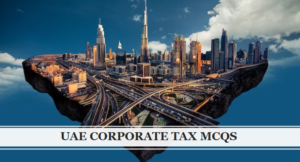Concept of Permanent establishment (Permanent Establishment) under Article 5 of the OECD Model Convention
Introduction and Permanent Establishment Meaning
Article 5 of the OECD Model Convention deals with the concept of a Permanent Establishment (PE). The term Permanent Establishment is used to evaluate a Contracting State’s right to tax the earnings of the enterprise of another Contracting State. Article 7 of the OECD Model Convention says other Contracting States cannot tax the profits of a business carried on by an enterprise of another Contracting State unless such enterprise conducts its operations through a permanent establishment in other Contracting State.
Tax treaties usually provide that a foreign company’s business profits in another State, are only taxable to the extent they are attributable to a Permanent Establishment, that such a foreign company has in another Contracting State. Due to this, the definition of Permanent Establishment in Tax Treaties is crucial to determine if a non-resident business has to pay income tax in another State.
Structure of Article 5 – Permanent Establishment
- 5(1) – Fixed place PE
- 5(2) Permanent Establishment inclusions
- 5(3) Building site / Construction / Installation
- 5(4) Specific activities exemption
- 5(5) Agency Permanent Establishment
- 5(6) Independent Agent
- 5(7) Subsidiary Permanent Establishment
- 5(8) Related Enterprise
Types of Permanent Establishment
Article 5(1) – Fixed place PE
Paragraph 1 of Article 5 of the OECD Model Convention deals with a fixed place Permanent establishment. The paragraph defines the term “permanent establishment” as a fixed place of business through which the company or an enterprise is wholly or partly carried on.
Learn More about “Article 5 – Permanent Establishment” in our International Tax Course
Permanent Establishment inclusions in Article 5(2)
Under Article 5(2), a permanent establishment specifically includes the following: –
- A place of management;
- A branch;
- An office;
- A factory
- A workshop
- A mine, an oil or gas well, a quarry or any other area to extract natural resources.
Construction PE or installation project PE – Article 5(3)
Paragraph 3 of Article 5 of the OECD Model Convention clarifies that a building site or construction or installation project constitutes a Permanent Establishment. However, it shall constitute a PE only if permanent establishment lasts for more than a year (twelve months) in a particular Contracting State. Therefore, any building site or construction or installation project which exists for a lower threshold period would not make a permanent establishment by itself.
A building site or construction or installation project includes building roads, bridges, or canals, the renovation of buildings, roads, bridges, or channels that involve more than just maintenance or renovating, the laying of pipes, and digging or dredging.
Also, the term “installation project” doesn’t just mean installing something for a building project. It can also mean putting in new equipment, like a complex machine, in an existing building or outside the building. Paragraph 3 also includes planning and overseeing the construction of a building on the site.
Specific activities Exclusion to Permanent Establishment- Article 5(4)
In Article 5(4) of the OECD Model Convention, a list of business activities is excluded and therefore, they do not constitute a PE.” The following activities, even if they are done at a fixed place of business, do not constitute PE:
- The use of facilities solely for the storage, display, or delivery of the enterprise’s goods or merchandise;
- The maintenance of a stock of the enterprise’s goods or merchandise solely for storage, display, or delivery;
- The maintenance of a stock of the enterprise’s goods or merchandise solely for processing by another enterprise;
- The maintenance of a fixed place of business solely for purchasing the merchandise or goods or for collecting information for the enterprise;
- The maintenance of a fixed place of business solely for carrying out any other activity of the enterprise;
- The maintenance of a fixed place of business is solely for the combination of any of the activities above-mentioned.
Article 5(4) however provides that the above-mentioned exceptions apply only if the overall activities are of preparatory or auxiliary in nature.
Paragraph 4.1 of Article 5 provides that the provision of Article 5 (4) of exclusions will not apply if the enterprise or a closely related enterprise carries on the activity at the same or another place in the Contracting State and:
- If that place or other place is a PE for the enterprise or a closely related enterprise,
- If the overall activity from the combination of activities undertaken by the two enterprises in the same place or two different places is not preparatory or auxiliary in nature.
This is only if the activities carried on by the enterprise in the same place or at two different places are complementary functions that are cohesive in nature.
Learn More about “Article 5 – Permanent Establishment” – Subscribe International Tax Course
Dependent Agent or Agency Permanent establishment Article 5(5)
In addition to the above, a business would be considered to have a permanent place of business in another State, if a person is working on behalf of the business, under certain conditions specified. In such a case, even if the business does not have a fixed place of business in that State, it would have a PE in the form of a dependent agent of the enterprise.
A dependent agent is a person, acting in a Contracting State on behalf of a foreign enterprise and, in acting as such, routinely signs contracts or routinely plays the main role in concluding contracts that are routinely signed without any significant changes by the enterprise.
These contracts are any of the following:
(a) In the name of the enterprise,
(b) For the transfer of ownership of the property, ,
(c) For the transfer of the right to use the property owned by that enterprise,
(d) The enterprise has the right to use the property,
(e) For the provision of services by the entity.
Whenever an agent does such work for the business in a foreign State, the business is considered to have a permanent establishment in such a foreign State.
But if these activities are under the exclusions as per Article 5 (4), then the fixed place would not be considered a permanent establishment for the enterprise, even if it has a dependent agent.
Independent Agent Article 5(6)
If an enterprise of a Contracting State carries on business dealings through an independent agent, then such an enterprise cannot be taxed in the other Contracting as it is deemed that it does not have a PE in the foreign country. This provision only applies if the agent is acting for the enterprise in the ordinary course of that business.
However, a person will not be considered as an independent agent of the enterprise if he works exclusively or almost exclusively on behalf of one or more enterprises to which it is closely related.
Subsidiary Permanent Establishment – Article 5(7)
This Article provides that merely because a parent company has a subsidiary company in a foreign State, it would not imply that the subsidiary company is a permanent establishment of the parent company. A subsidiary company will be considered a separate legal entity regarding taxes. Even if the parent company manages the business or trade of the subsidiary company , that doesn’t make the subsidiary company a permanent location of the parent company.
In other words, if a company based in one of the Contracting States, controls or is controlled by a company based in the other Contracting State, or if a company based in one of the Contracting States does business in the other Contracting State (either through a permanent establishment or in some other way) it would not make either of those companies a permanent establishment of the other.
Learn More about “Article 5 – Permanent Establishment” – Subscribe International Tax Course
Closely Related Enterprise – Article 5(8)
Article 5 (8) defines the closely related enterprises. It provides that a person is closely related to the enterprise if:
- One has control over the other, or
- Both are under the control of the same person or enterprise
Additionally, the person or enterprise, that iis considered as closely related, has direct or indirect control as follows:
- More than 50% of beneficial interest in the other, or
- In the case of the company, more than 50% of either:
- Aggregate vote and value of company’s share, or
- Beneficial equity interest in the company
In the case of other person or enterprise having control over a closely related enterprise, it has direct or indirect control as follows:
- More than 50% of beneficial interest in the person or enterprise or two enterprises, or
- In the case of the company, more than 50% of either:
- Aggregate vote and value of company’s share, or
- Beneficial equity interest in the company




